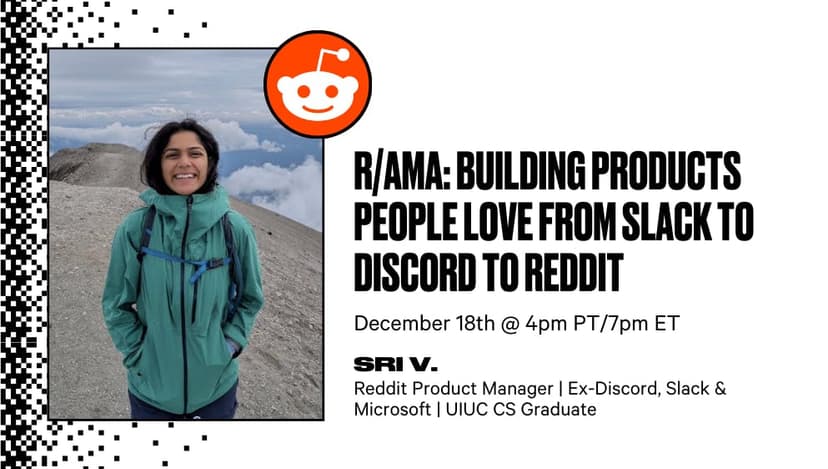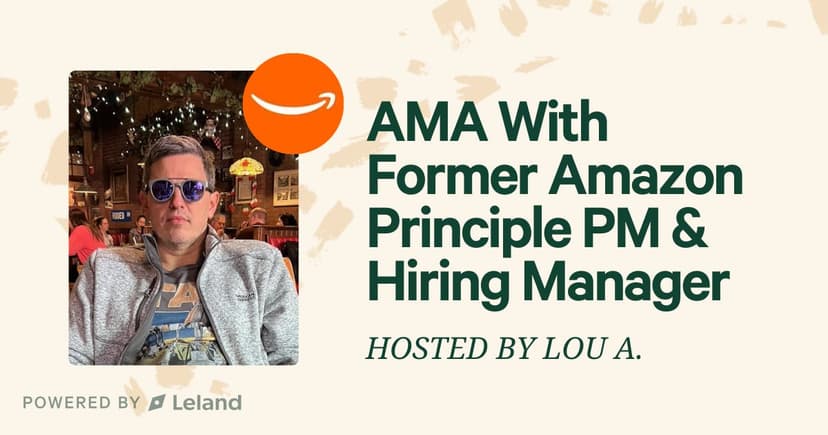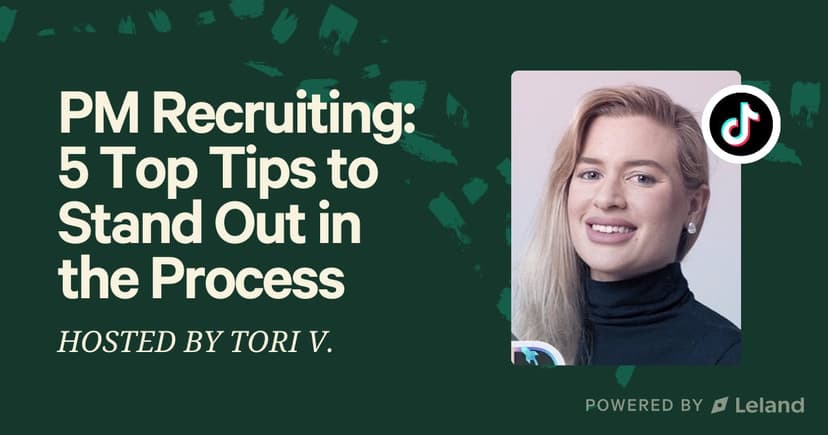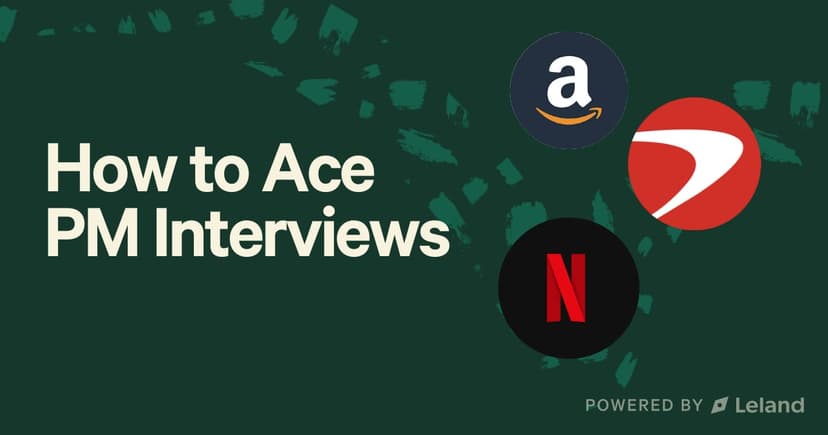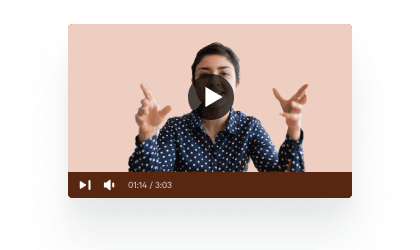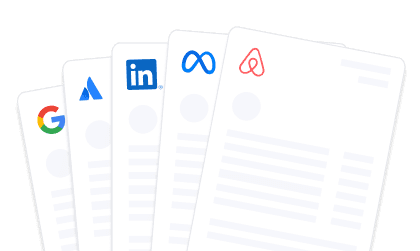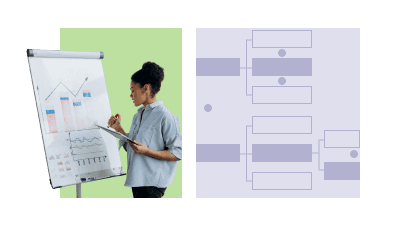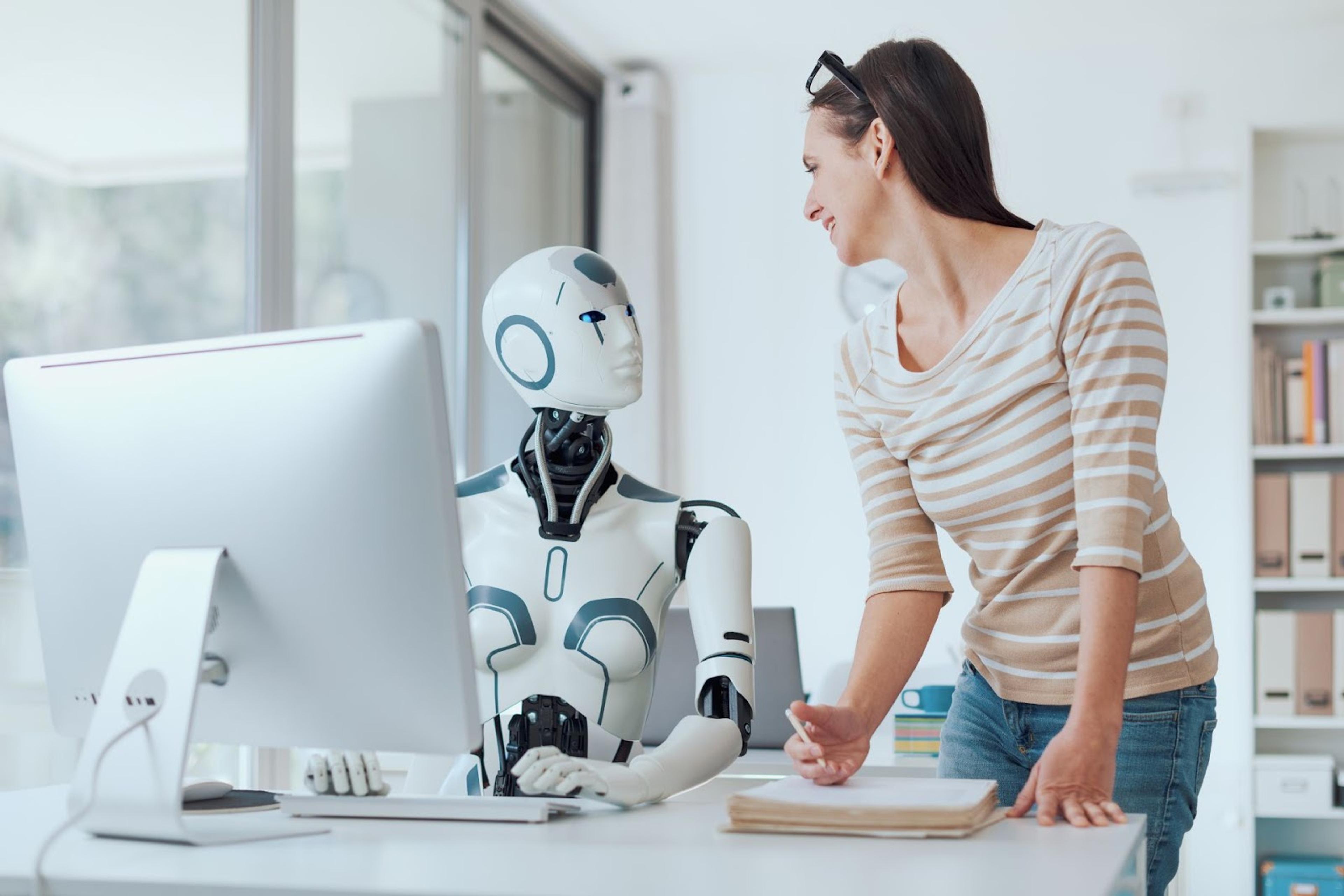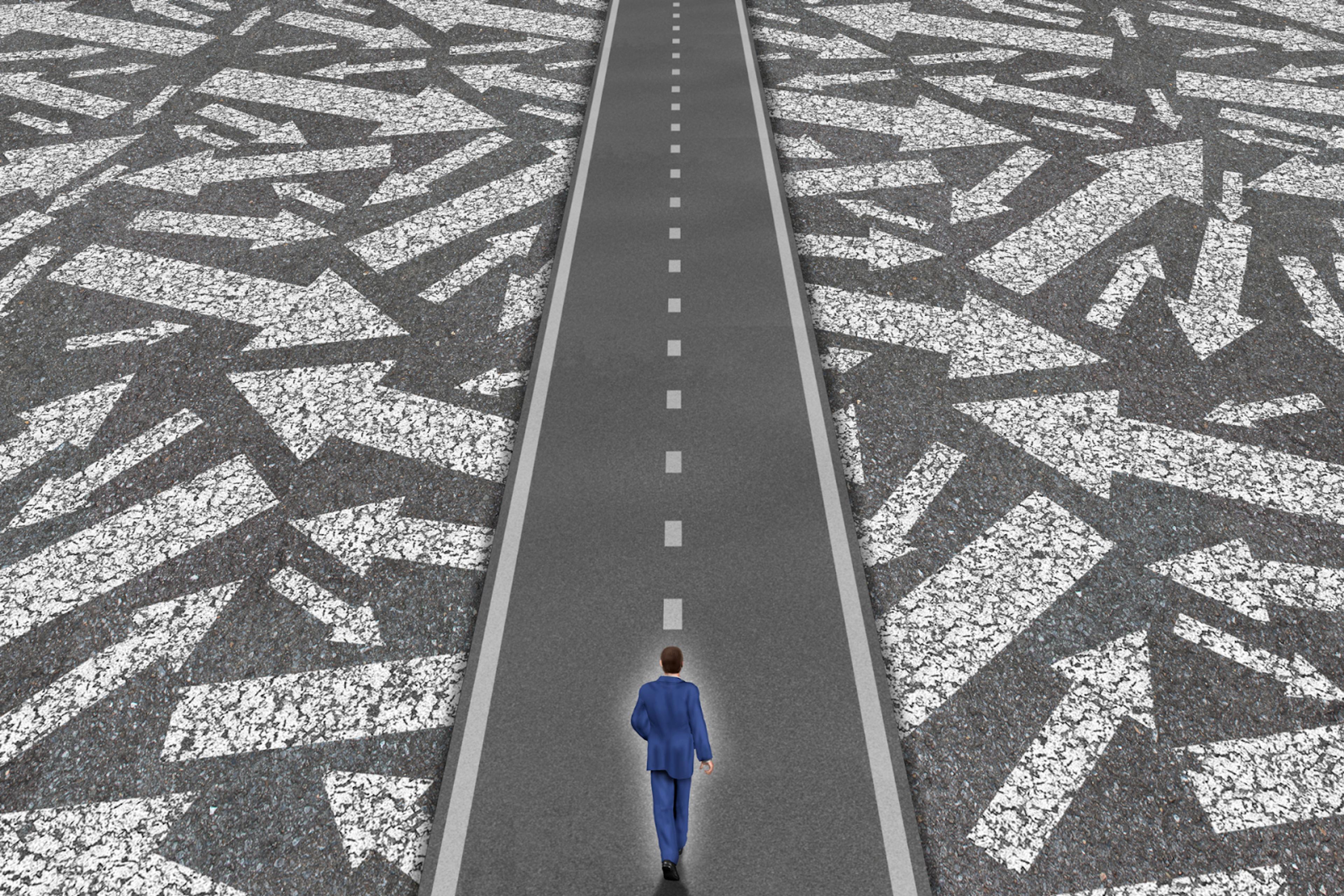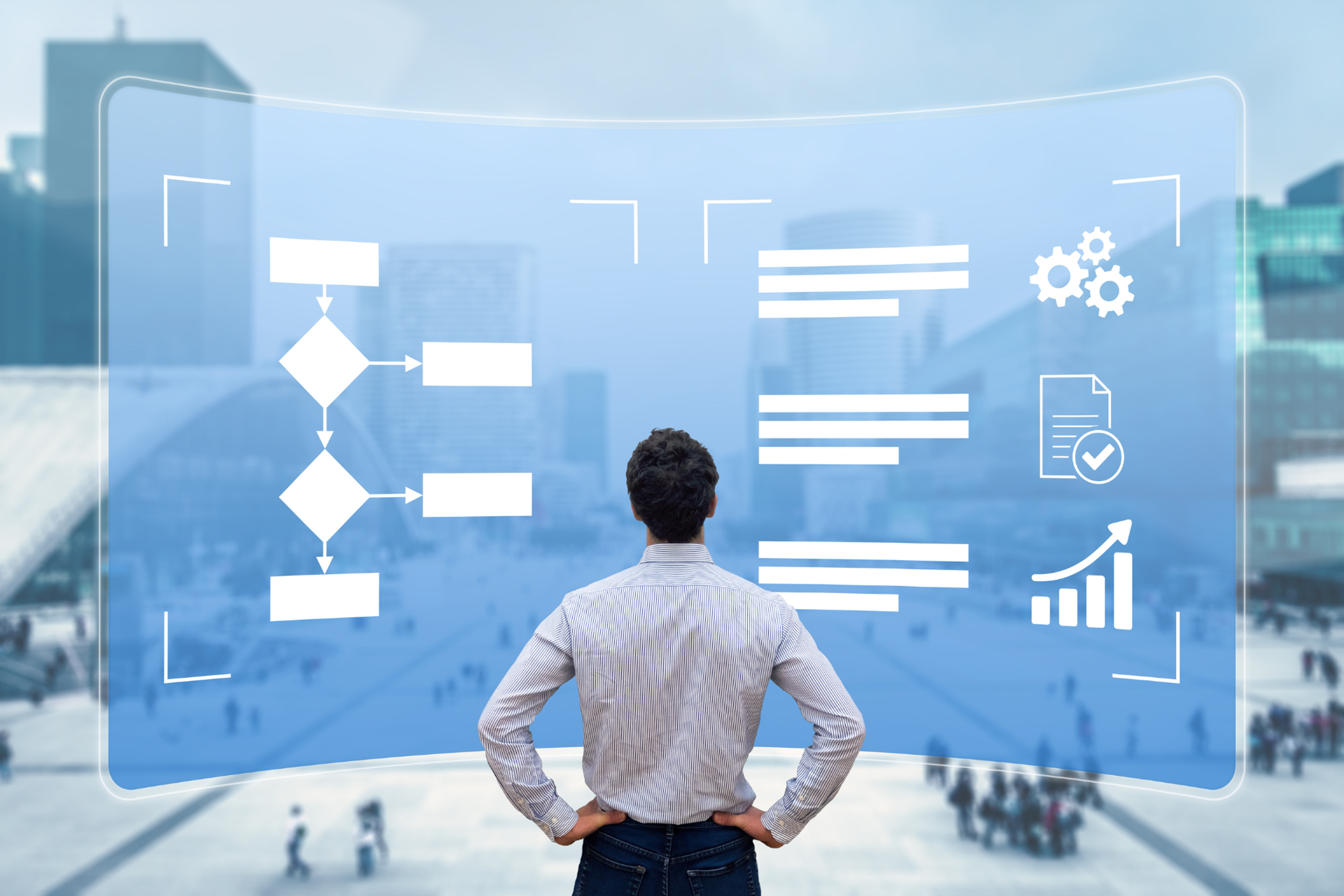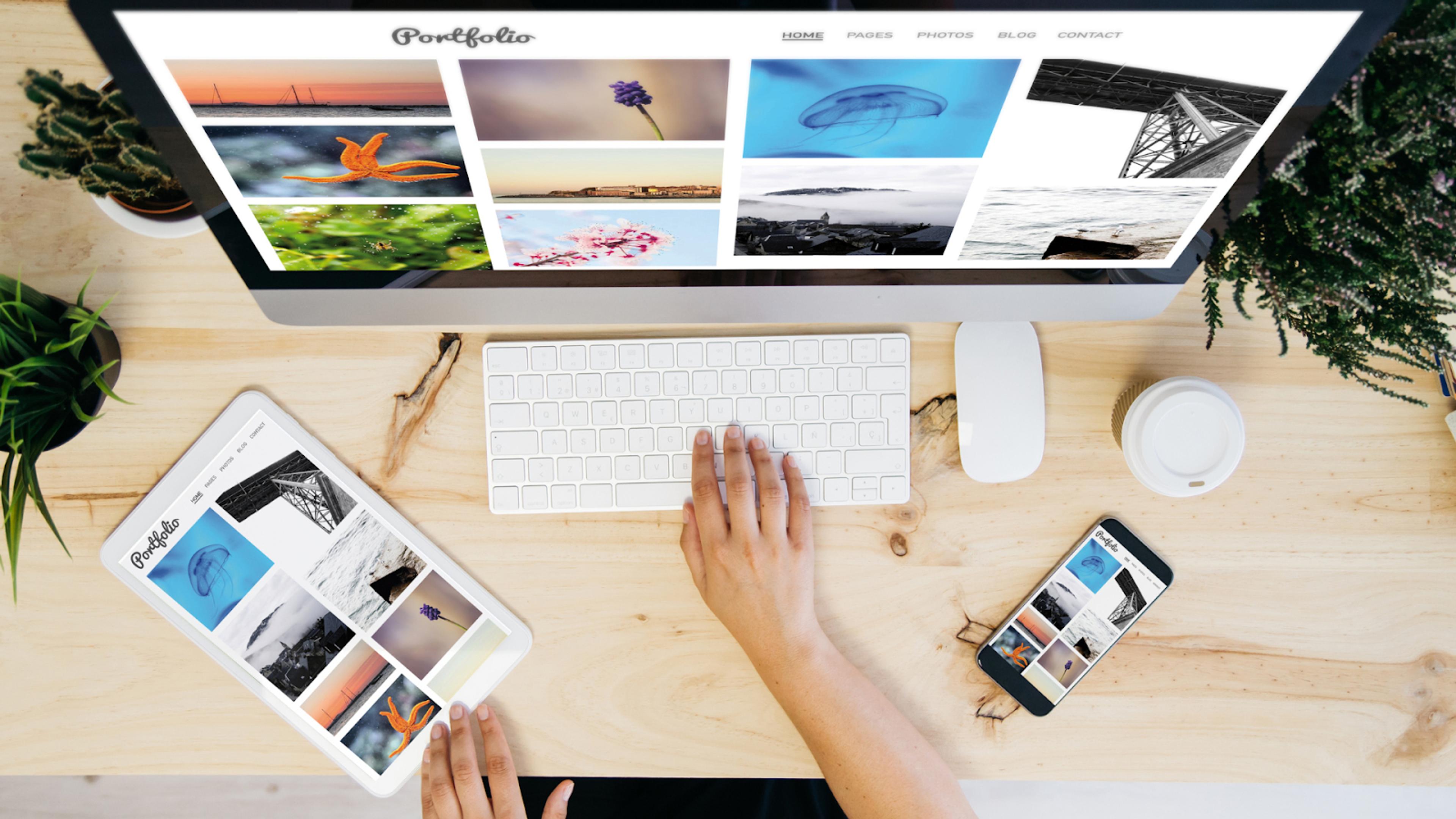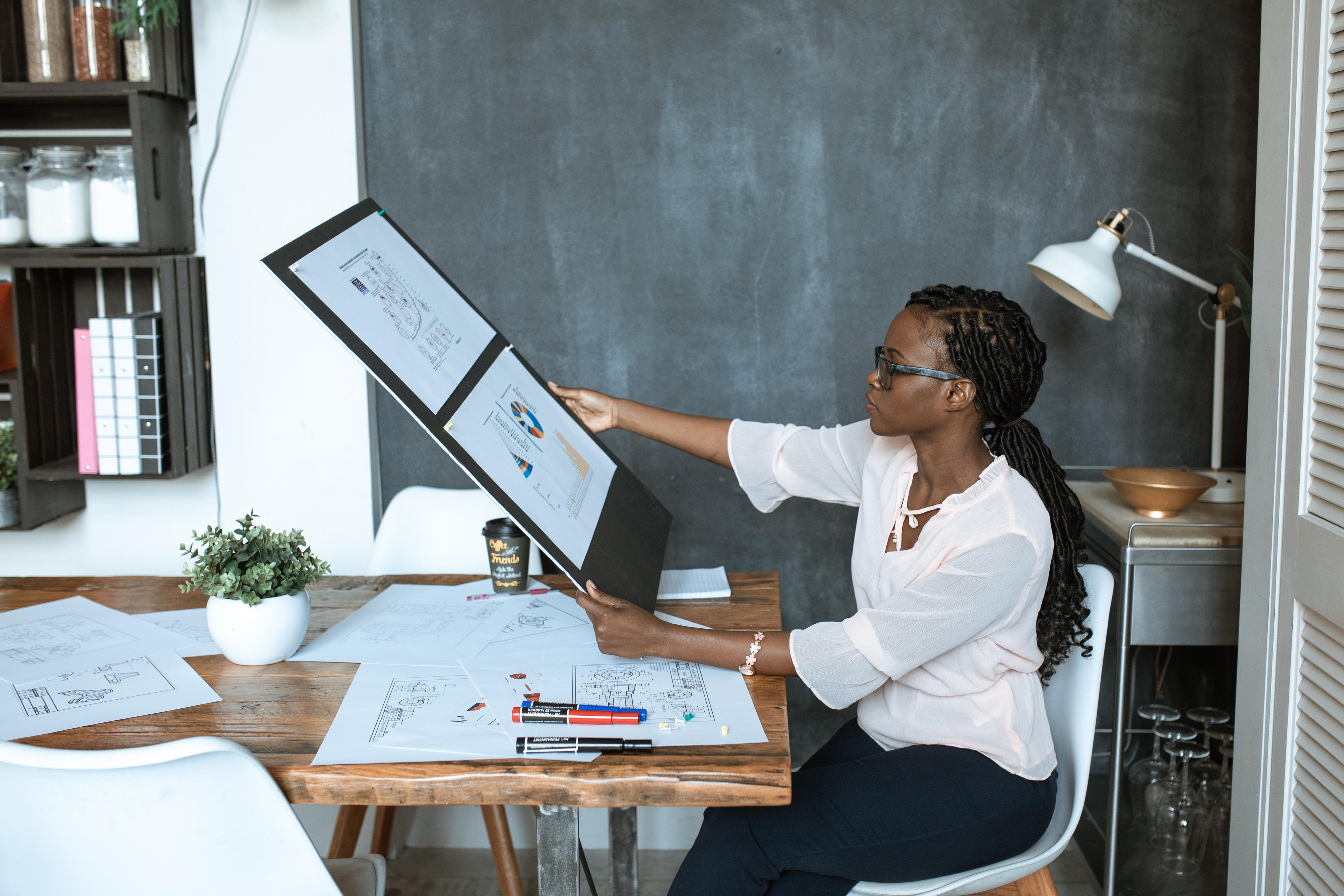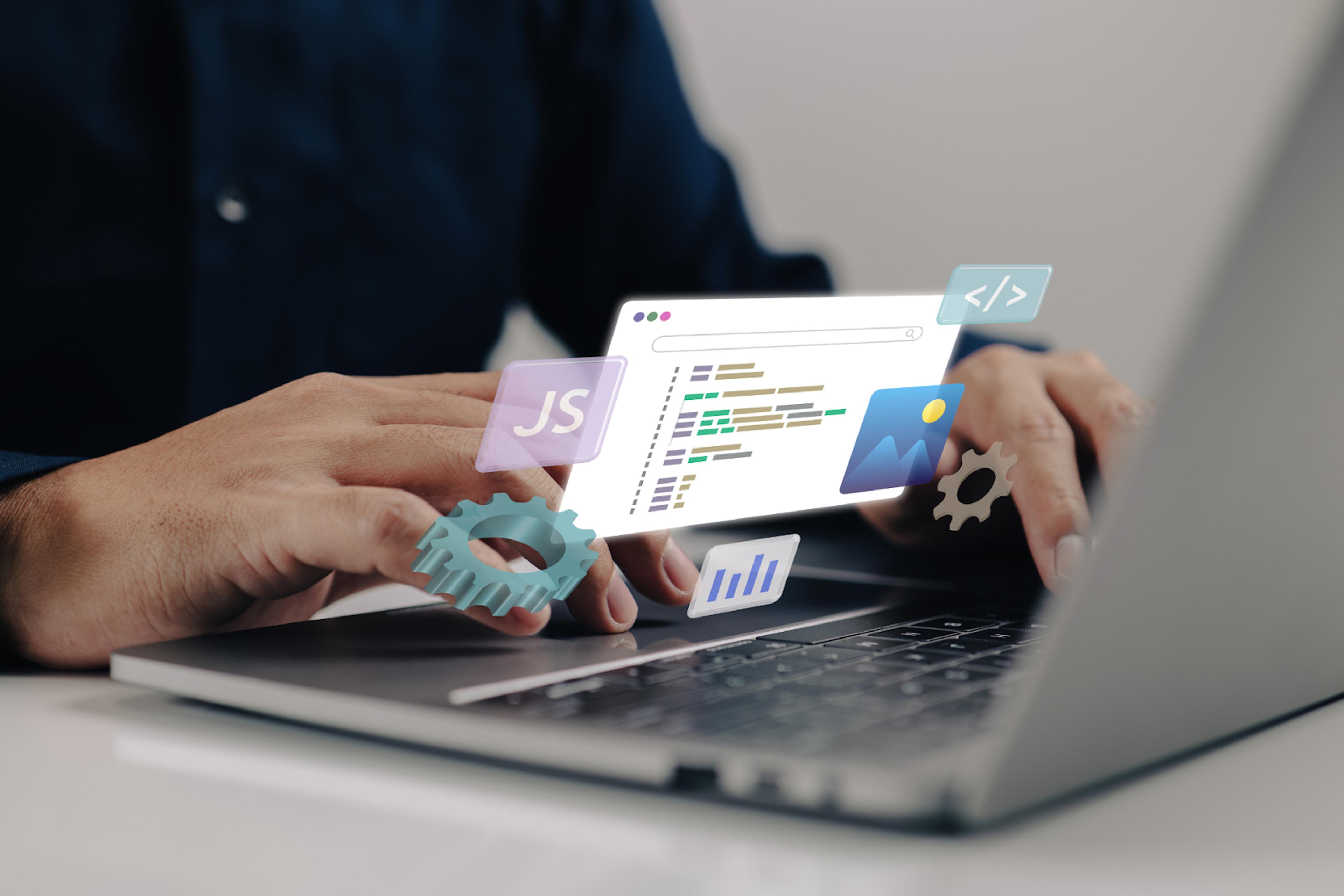Product Design Interview: What It Is, Questions, & Tips
Prepare for your product design interview with our ultimate guide. Get tips, insights, and common questions to boost your confidence and succeed.
Posted October 26, 2025

Join a free event
Learn from top coaches and industry experts in live, interactive sessions you can join for free.
Table of Contents
The product design interview can feel daunting, but with the right preparation, it’s an incredible opportunity to showcase your creativity, problem-solving skills, and passion for building great user experiences. Whether you're a seasoned designer or just starting out, this guide will walk you through everything you need to know to succeed. We’ll break down common questions, proven frameworks, and strategies that top product designers use to impress interviewers. Let’s get started!
What is Product Design?
Product design is the end-to-end process of identifying user problems, defining solutions, and crafting intuitive, effective, and scalable products that meet both user needs and business goals. It combines design thinking, user research, and cross-functional collaboration to ensure that every product decision is purposeful, testable, and grounded in a real-world context.
A great product designer goes beyond visuals, shaping the user experience, guiding the design process, and influencing product strategy. They ask:
- Who are the users?
- What are their unmet pain points?
- How can we deliver a solution that’s not only usable, but valuable, viable, and feasible?
The result is a final product that balances desirability (do users want it?), feasibility (can we build it?) and viability (does it support the business?
At its core, product design is about solving the right problems, not just making things look good, but making them work better for people.
Read: What is Product Management?
What is the Product Design Interview?
The product design interview is a rigorous evaluation of a candidate’s ability to think critically, solve real-world problems, and drive design decisions that balance user needs, business goals, and technical constraints. It's not just about aesthetics or wireframes; it's about how you think, collaborate, and deliver outcomes.
At its core, this interview tests your:
- Design process - Can you clearly articulate how you go from research to solution?
- Product thinking - Do you understand user problems, context, and trade-offs?
- Collaboration skills - How do you partner with product managers, engineers, and stakeholders?
- Communication - Can you explain your rationale and accept constructive criticism?
- Growth mindset - Are you open to iteration, feedback, and learning from past mistakes?
Expect to be challenged with case study presentations from your design portfolio, live whiteboarding exercises, or product critiques, and structured interviews probing how you handle ambiguity, scope, edge cases, and real user pain points.
Unlike general design interviews that focus on visual or brand design, product design interviews are structured to reveal how you solve problems, define success metrics, and prioritize features that actually ship. They’re especially common for digital product roles (apps, SaaS, consumer platforms), but product managers may also be asked similar questions, given the overlap in skills around user research, systems thinking, and solution prioritization.
Great designers don’t just “show their work,” but they guide interviewers through how they think. That’s what separates candidates who check boxes from those who win offers.
What Interviewers Really Want
Hiring teams aren’t just looking for clean visuals or well-rehearsed answers—they’re assessing how you think, how you collaborate, and how you impact the product. Here’s what separates top product design candidates from the rest.
CARDIO: Show Your Process, Not Just the Screens
Many interviewers use the CARDIO framework (Context, Assumptions, Research, Discoveries, Iteration, Outcome) as a lens to evaluate your case studies. It’s not enough to walk through what you did; you need to explain why you made certain design decisions, what trade-offs you considered, how feedback changed your direction, and how your work moved the product forward.
For example, when discussing a feature redesign, don’t stop at “we improved the UI.” Add: “We saw a 25% drop in task completion, so I reviewed the analytics, mapped user journeys, ran usability testing, and uncovered that users were misinterpreting a key CTA. We restructured the layout, simplified the copy, and the new version increased completion by 32%.” That’s CARDIO in action.
Design Thinking + Research-Backed Strategy
Great candidates don’t treat design thinking as a buzzword—they show how it shapes their day-to-day decisions. Whether you're tackling a whiteboard challenge or walking through your portfolio, demonstrate how you’ve applied structured empathy, iterative prototyping, and usability testing to refine your work.
Interviewers look for signs that you’re proactive in surfacing user needs, synthesizing qualitative and quantitative research, and generating multiple solution paths before converging on one. Highlight your use of empathy maps, surveys, in-product behavior data, or user interviews. If you applied rapid testing or A/B experimentation, explain what you learned and how it informed the final product.
Real-World Insights from Designers Who've Been There (Reddit Speaks)
Candidates on Reddit often reveal what the most insightful interview questions look like. One shared:
"An interviewer once asked, 'What’s the hardest thing you’ve designed, and how did you get feedback?' It wasn’t about the outcome—it was about how I navigated critique under pressure."
This reflects a core truth: interviewers aren’t just evaluating your design skills, they’re watching how you respond to constructive criticism, how you ask clarifying questions, and how you dive deep when stakes are high or context is ambiguous.
The best responses come from those who approach design interviews like product problems: with curiosity, humility, and an openness to learn. If you can clearly articulate how you think, not just what you built, you’ll be ahead of 90% of candidates.
Key Skills Interviewers Are Actively Evaluating
Top candidates in product design interviews aren’t just judged by their portfolio; they’re evaluated on how they think, collaborate, and solve real-world problems under pressure. Here’s what great interviewers are really looking for, and how to showcase it.
Craft and Execution
Craft is the foundation of strong product design. Interviewers want to see that you not only have fluency in tools like Figma, Framer, Sketch, or Adobe Creative Suite, but that you use them with intent. The goal isn’t just polished UI—it’s clarity of communication, attention to detail, and consistency in user experience. During a live challenge or portfolio review, they’re evaluating how well you translate ideas into usable, testable, accessible designs that are grounded in the constraints of technology, user needs, and business objectives.
Cross-Functional Collaboration
Great design is a team sport. Employers want to see how you work across disciplines, particularly with product managers, engineers, and researchers. Collaboration doesn’t just mean being easy to work with. It means actively integrating feedback, aligning with roadmap constraints, and building shared understanding. You might be asked to walk through a time when engineering pushed back on your design, or when you had to adjust based on stakeholder input. Strong candidates show how they navigate those conversations while still advocating for the user.
Critical Thinking and Product Sense
Product design is full of ambiguity. Can you quickly get to the core of a problem? Can you distinguish between symptoms and root causes? During interviews—especially case study presentations—you're expected to think out loud, define the right user segment, identify their pain points, and recommend thoughtful, practical solutions. Strong product sense is about aligning user value with business strategy, and doing it with both speed and depth.
Problem-Solving
Every product design interview, whether live or take-home, is ultimately about your ability to solve complex problems. That doesn’t just mean generating clever solutions. It means breaking challenges down into components, asking the right clarifying questions, and building a coherent story around how you'd move from ambiguity to clarity. Interviewers want to know: When you don’t know the answer, do you have a process that helps you figure it out?
Communication and Storytelling
You might be a brilliant designer, but if you can’t explain your thinking, interviewers will struggle to follow you. Great communication in a product design interview looks like structured storytelling, clear trade-off discussion, and evidence that you’ve internalized feedback well. Whether you’re walking through a project in your portfolio or responding to a live critique, how you tell the story of your work matters just as much as the work itself.
Data-Mindedness
Hiring teams increasingly expect designers to use data as a tool for iteration and impact. You should be able to describe how you’ve used usability testing, analytics, or even informal user feedback to shape a design. You don’t need to be a data scientist, but you do need to speak the language of metrics, success criteria, and continuous learning. If you can explain how a design decision led to improved task completion or reduced churn, that’s a competitive advantage.
Creativity and Innovation
Creativity isn’t just about aesthetics. It’s about how you think through problems, explore alternatives, and bring unexpected insights into the process. In interviews, creativity often shows up in how you approach constraints—like how you reimagined a broken onboarding flow or introduced a new feature that simplified user interaction. Interviewers are looking for original thinkers who bring fresh ideas to the table, not just best practices.
Prioritization and Tradeoffs
Product design always happens under constraints. Great candidates know how to ruthlessly prioritize based on user value, feasibility, and strategic fit. You may be asked how you decide what to build first, or how you adjusted the scope to hit a deadline without compromising the experience. Being able to articulate your prioritization framework—whether that’s ICE, MoSCoW, HEART, or something homegrown—demonstrates that you think like a partner, not just a producer.
20 Product Design Interview Questions with Example Answers
Preparing for a product design interview can be challenging, but with the right approach, you can showcase your skills and land your dream job. Here are 20 common product design interview questions with sample answers:
1. How would you define yourself as a designer?
Example Answer: "I define myself as a product designer who thrives on solving complex problems through user-centered design. I’m passionate about creating intuitive, impactful products that balance user needs with business objectives, while keeping technical constraints in mind. For example, in my last project, I led a redesign that boosted user retention by 20% by streamlining the overall user experience based on extensive user feedback and testing. My goal is always to build products that feel seamless and meaningful to users while driving measurable business outcomes."
2. Describe the project you're most proud of. Why?
Example Answer: "I’m most proud of a mobile app redesign project where we faced tight deadlines but managed to significantly improve user engagement. Through usability testing and data analysis, I identified key pain points and worked with cross-functional teams to implement a more intuitive interface. The result? A 30% increase in daily active users and a 15% higher user satisfaction score post-launch. This project not only showcased my ability to collaborate under pressure but also reinforced my commitment to user-driven design."
3. What design tools do you use to create and communicate your ideas?
Example Answer: "I use Figma, Sketch, and Adobe XD to create interactive prototypes that allow stakeholders to experience the design before development. I lean heavily on Figma’s collaborative features to gather real-time feedback from teams. Miro is my go-to for brainstorming and mapping user journeys, while InVision helps me share prototypes and receive detailed feedback, ensuring alignment across teams before moving forward."
4. How do you ensure your designs meet customers' demands?
Example Answer: "I ensure my designs meet customer needs by incorporating user testing and feedback throughout the design process. For instance, in my last project, we ran A/B tests on two versions of a new feature and found that one version improved user task completion by 25%. I then conducted user interviews to dig deeper into the feedback and iterated the design accordingly. By consistently validating design choices with real users, I ensure the final product is both user-centric and impactful."
5. What’s your experience with user research or usability testing?
Example Answer: "In a recent project, I conducted usability testing by creating user flows and observing how participants interacted with our prototype. We used think-aloud protocols to capture real-time user feedback, which uncovered two major usability issues. Based on these insights, I led design iterations that ultimately reduced user drop-off by 18% during the onboarding process. This hands-on research was key to creating a product that met user needs and led to a successful launch."
6. How do you approach designing for mass production?
Example Answer: "When designing products for mass production, I consider factors like scalability and technical constraints. I work closely with engineers to ensure that my designs can be manufactured efficiently while maintaining quality and aesthetics. For instance, I recently designed a product where we optimized the materials to reduce manufacturing costs by 15%, ensuring the product remained functional and visually appealing while still cost-effective for large-scale production."
7. What’s your design process for digital vs. physical products?
Example Answer: "For digital products, I focus on interaction patterns, responsiveness, and user flows across different devices. For physical products, I prioritize ergonomics, materials, and the tactile experience. Both processes involve extensive user testing, but with digital products, the emphasis is on navigation and screen size optimization, while for physical products, it's about ensuring ease of use and durability."
8. How do you handle situations where you're getting negative feedback on your design?
Example Answer: "I view negative feedback as an opportunity for improvement. When I receive constructive feedback, I first listen carefully to fully understand the concern. I then collaborate with every team member to discuss possible solutions and make necessary adjustments. My goal is to turn criticism into actionable changes that enhance the product and better serve the user."
9. What analytics tools and KPIs do you use to evaluate product designs?
Example Answer: "I use tools like Google Analytics and Mixpanel to track key performance indicators such as user engagement, conversion rates, and task completion times. These metrics provide both quantitative and qualitative data that help me assess how well users are interacting with the product, allowing for data-driven design iterations."
10. How do you make websites and platforms accessible to all user groups?
Example Answer: "I adhere to the Web Content Accessibility Guidelines (WCAG) to ensure designs are accessible. This includes using high-contrast colors, ensuring screen reader compatibility, and designing keyboard-friendly navigation. I also conduct user testing with individuals who have disabilities to ensure the product is truly usable for a diverse range of users."
11. What does "design thinking" mean to you?
Example Answer: "Design thinking is a user-centered approach to problem-solving that involves empathizing with the user, defining their needs, brainstorming potential solutions, prototyping, and testing. It encourages iterative design, constantly learning from users, and refining the product until it truly solves their problems."
12. How do you balance aesthetics with functionality in your designs?
Example Answer: "I believe aesthetics and functionality must work together seamlessly. My approach is to create visually appealing designs that also solve real user problems. I rely on user testing and performance metrics to ensure that the designs not only look good but are also intuitive and easy to use."
13. Describe a time when you had to negotiate your way to the ideal UX solution.
Example Answer: "During a project with tight deadlines, developers flagged several proposed features as too complex to implement within the timeline. I worked with them to prioritize the most impactful features and simplify others without compromising on user experience. This negotiation resulted in a UX solution that met both customer needs and technical barriers, allowing us to launch the product on time."
14. How do you stay updated on the latest trends in product design?
Example Answer: "I follow industry blogs, attend conferences like UX Week, and actively participate in design communities like Dribbble and Behance. These platforms not only help me stay updated on trends but also allow me to engage with other designers and gain insights into emerging best practices."
15. What’s your approach to designing for different platforms (e.g., mobile, web, desktop)?
Example Answer: "I adapt designs for each platform by considering the unique interactions of each, such as touchscreens for mobile or mouse navigation for desktops. However, I strive to maintain a consistent user experience across all platforms to ensure users can seamlessly transition from one to another."
16. How do you prioritize features when designing a new product?
Example Answer: "I prioritize features by evaluating their potential impact on both users and business goals. I use user feedback, data analytics, and business objectives to guide my decisions. I focus on features that will deliver the most value to the user while aligning with the company's long-term goals."
17. Describe your experience with creating design systems.
Example Answer: "I've developed design systems that ensure consistency across products by defining reusable components, design principles, and patterns. These systems streamline the design process and ensure that all teams are working within the same visual and functional framework, providing a unified user experience across platforms."
18. How do you collaborate with developers to ensure your designs are implemented correctly?
Example Answer: "I collaborate closely with developers by providing detailed design specifications, user flows, and interactive prototypes. Tools like Zeplin and Figma are essential for clear handoff, and I schedule regular check-ins to address any implementation challenges and ensure the design vision is fully realized."
19. What’s your approach to designing for different user personas?
Example Answer: "I create detailed user personas based on user research and behavioral data. By understanding the unique needs, goals, and pain points of different personas, I tailor my designs to address these specific requirements, ensuring the product serves a diverse user base effectively."
20. How do you measure the success of your designs?
Example Answer: "I measure the success of my designs through metrics such as user satisfaction, engagement rates, and business KPIs like conversion rates. I also rely on A/B testing and user feedback to continually iterate and refine the design, ensuring that it meets both user needs and business goals."
Related topic: The 50 Most Common Product Manager Interview Questions (With Sample Answers)
Product Design Frameworks
Having a solid, adaptive product design framework is essential to building successful, scalable, and user-driven products. Whether you're a designer, PM, or cross-functional collaborator, choosing the right framework depends on your product maturity, validation needs, and team dynamics. Below is a comprehensive table of expert-recognized frameworks to help guide your approach.
| Framework | What It Is | When to Use It | Key Components | Expert Insight |
|---|---|---|---|---|
| Minimum Viable Product (MVP) | A stripped-down version of a product built with just enough features to validate an idea and learn from users. | Early-stage product ideas that need validation without heavy investment. | Landing pages, explainer videos, prototypes, single-feature apps, email tests. | Use MVPs to minimize risk while maximizing learning. The goal is not to launch perfect products—it’s to collect feedback and iterate quickly. |
| Double Diamond Design Process | A framework from the British Design Council that splits the design process into two phases: problem and solution. | For end-to-end product discovery and solution validation. Great for cross-functional alignment. | Discover → Define → Develop → Deliver. Iterative cycles of research, ideation, and refinement. | Encourages divergent and convergent thinking. Not just for linear execution—top teams move fluidly between phases as insights evolve. |
| HEART Framework | A UX success measurement framework created by Google to quantify product impact across user experience. | Post-launch optimization or refining mature products based on behavior and sentiment. | Happiness, Engagement, Adoption, Retention, Task Success—measured through goals, signals, and metrics. | Use HEART to balance quantitative KPIs with qualitative UX insights. Tie success metrics to design goals, not just business outcomes. |
| CIRCLES Method | A structured way to answer product and design interview questions under pressure—especially around feature thinking. | Interviews, stakeholder presentations, or high-stakes problem framing. | Comprehend → Identify → Report → Cut → List → Evaluate → Summarize. | Used by top PMs and designers to structure responses clearly and concisely. Also useful in real-world product discussions and ideation sessions. |
| Design Thinking | A human-centered approach to innovation that emphasizes empathy, ideation, and iteration. | For early-stage exploration, problem framing, or when diving deep into user needs. | Empathize → Define → Ideate → Prototype → Test. | Excellent for uncovering unmet user needs and developing novel solutions. Keep it user-first and non-linear—true design thinking allows for reframing throughout. |
| Lean Startup | A build-measure-learn loop is used to rapidly validate assumptions and pivot based on data. | High-uncertainty environments where speed of learning is more important than feature completeness. | Hypotheses → Experiments → Feedback → Iteration. | Pairs well with MVPs and A/B testing. Especially powerful when combined with UX research methods. |
| Jobs To Be Done (JTBD) | A framework for understanding the functional and emotional drivers behind why users hire a product. | When you need to uncover the real motivations and pain points driving behavior. | Job stories, user motivations, progress-making triggers. | Excellent for surfacing unmet needs and informing product-market fit. Replace personas with actual user goals to stay grounded in impact. |
Choose the Right Framework
There’s no one-size-fits-all approach. Your framework should reflect:
- Product maturity (exploration vs. optimization)
- Type of problem (well-defined vs. ambiguous)
- Validation stage (early idea vs. in-market refinement)
Top teams often mix and adapt frameworks, for example, pairing Design Thinking with Lean Startup, or applying HEART metrics to Double Diamond projects. The best framework is the one that keeps you close to real users, aligned with your goals, and iterating with intent.
Real-world insight: Frameworks aren’t checklists, they’re lenses. Use them to think better, not to follow blindly.
Let me know if you'd like this in a downloadable format (e.g., comparison chart PDF or Notion database).
Preparing for a product design interview requires more than brushing up on questions—it’s about showing how you think, solve, and collaborate. Below are five expert-level tips designed to help you stand out in any interview room.
5 Product Design Interview Tips to Follow
Preparing for a product design interview requires more than brushing up on questions—it’s about showing how you think, solve, and collaborate. Below are five expert-level tips designed to help you stand out in any interview room.
1. Research Like a Product Strategist
Don’t just Google the company, study its product ecosystem, users, and recent launches. Analyze their design language, tone, accessibility choices, and design maturity. Look at their app store reviews, blog posts, case studies, and job descriptions. This helps you tailor your answers and speak to the company’s specific pain points. Use that insight to frame your portfolio and questions with strategic relevance.
Pro Tip: If you're interviewing at a B2B company, understand their customer segments. If it's a consumer-facing product, install and critique their UX firsthand.
2. Curate a Story-Driven Portfolio
Select 2–3 case studies that showcase your range (e.g., early-stage exploration, visual design, systems thinking). For each, clearly explain the problem, your approach, the iterations, and the impact. Interviewers want to hear your rationale, not just see pretty screens. Be transparent about tradeoffs, collaboration, and what you’d do differently next time.
Prepare a 5–7 minute walkthrough per project and be ready to go deeper when prompted. Great candidates frame their work like mini case study presentations.
3. Practice Real Answers, Not Memorized Scripts
Treat interview prep like usability testing: iterate on how you tell your story. Practice answering questions using frameworks like STAR (Situation, Task, Action, Result) or CARDIO. Be specific, quantify impact, name constraints, and explain tools. Aim to show how your design process led to tangible results. Think out loud during whiteboard sessions to reveal your thinking.
Pro Tip: Record yourself answering common product design interview questions and evaluate clarity, confidence, and pacing.
4. Ask Insightful Questions That Reflect Product Thinking
Prepare questions that go beyond culture or role expectations. Ask about product vision, design metrics, cross-functional collaboration, and how the team balances speed vs. quality. This shows you’re thinking like a partner, not just a contributor.
Example: "How does the design team measure success across user journeys, and how are those insights integrated into the roadmap?"
5. Show Your Thought Process at Every Stage
From portfolio reviews to live challenges, interviewers want to see how you approach ambiguity. Instead of jumping to solutions, ask clarifying questions, define constraints, and narrate your design rationale. Be comfortable being wrong; it’s your adaptability and clarity that matter. The best candidates demonstrate not just what they design, but how and why they got there.
Use phrases like "I considered X but chose Y because..." or "Here’s how I narrowed down the options based on feedback and feasibility."
Your Tactical Prep Checklist
This checklist is your strategy guide for showing up as a high-signal, hire-ready designer. Each point is crafted to demonstrate not just a candidate’s skills, but their mindset, leadership, and product thinking.
- Refine your CARDIO walk-throughs. Prepare 2–3 polished case studies using the CARDIO framework (Context, Assumptions, Research, Discoveries, Iteration, Outcome). Make each one measurable, strategic, and reflective of your growth.
- Craft your design process narrative. Build a repeatable, well-articulated story that outlines how you go from ambiguity to solution—framing your approach around phases like research, synthesis, ideation, validation, and delivery.
- Develop 3 high-leverage questions to ask your interviewers. Focus on product strategy, design operations, or how success is measured. Example: "How does the team balance qualitative insights with roadmap prioritization?"
- Run mock interviews that emphasize clarifying questions. Practice unpacking vague prompts, probing constraints, and asking smart follow-ups. This signals collaboration, ownership, and systems thinking under pressure.
- Thread core themes into your responses. Highlight moments where you drove outcomes through usability testing, acted on feedback, made data-informed prototypes, or demonstrated a growth mindset. These themes show you can lead with both empathy and execution.
The Bottom Line
Mastering the product design interview requires a blend of technical skills, creative thinking, and effective communication. By understanding the interview process, preparing for common questions, and leveraging key frameworks, designers can showcase their skills and make a lasting impression. This guide equips aspiring product designers with the tools to navigate the interview process confidently, from portfolio presentations to hands-on design challenges.
Remember, success in product design interviews goes beyond just technical skills. It's about demonstrating your ability to solve complex problems, collaborate with diverse teams, and create user-centered solutions. By following the tips outlined in this guide and staying true to your unique design perspective, you'll be well-prepared to tackle any product design interview and land your dream role in this exciting field.
For personalized feedback on your portfolio or case study storytelling, book a 1:1 mock interview or coaching session with a top product management coach on Leland to get expert insights tailored to your strengths and goals. Also, check out free events to unlock your full product design potential.
Do well, and good luck with your next job interview!
Read next:
- Data Product Manager Interviews: Questions & Tips
- Product Sense Interview: What It Is, Questions, & Tips
- Top 5+ Web Design Coaches
- How to Nail the Atlassian APM Interview
- How to Ace Your Capital One Product Manager Interview
- The North Star Framework: How to Define and Achieve Product Success
- Most Common Technical Questions in Product Management Interviews
- 20 Common System Design Interview Questions (With Sample Answers)
FAQs
What is a product design interview?
- A product design interview evaluates a candidate's ability to think through the product design process, considering user preferences and needs, technical barriers, and business goals. It often involves conducting user research and presenting solutions based on real-world problems.
How to ace a product design interview?
- To excel, focus on understanding the problem, defining the users, and exploring possible solutions that align with business goals. Demonstrate your product designer growth mindset by showcasing your approach to balancing user needs and constraints.
What are the 4 C's of product design?
- The 4 C's (Context, Concept, Craft, and Communication) are key concepts in the product design process. They help a product designer frame the problem, develop ideas, and communicate them clearly, all while considering technical implications.
What is product design with examples?
- Product design involves creating solutions that solve user problems within specific technical constraints. For example, a product designer may develop a mobile app interface or redesign a physical product like a smart thermostat. Conducting user research and iterative prototyping are key parts of the process.
What steps should I take to excel in a product design interview?
- To excel in a product design interview, it's crucial to understand the interview format, thoroughly research the company, prepare a comprehensive portfolio, practice responding to typical interview questions, consider questions to ask the interviewers, organize your interview environment, and remain truthful throughout the process.
Browse hundreds of expert coaches
Leland coaches have helped thousands of people achieve their goals. A dedicated mentor can make all the difference.
